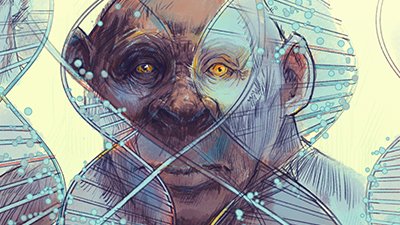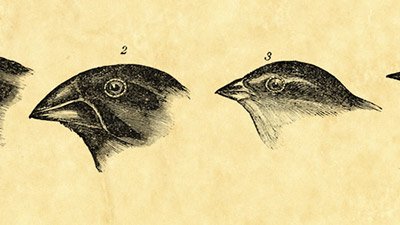
"Top-Ten" List Declares Evidence of Evolution
Are the evidences of evolution walking around with us every day? A recent “top ten” list answers in the affirmative.
News Source
- Smithsonian.com: “The Top Ten Daily Consequences of Having Evolved”
“[T]he evolution of homo sapiens [sic] has left behind some glaring, yet innately human, imperfections,” reports Smithsonian.com’s Rob Dunn. His list argues that “[o]ur own bodies are worse off than most simply because of the many differences between the wilderness in which we evolved and the modern world in which we live.” So what are these imperfections we walk around with, and do they prove evolution?
Dunn relies on an evolutionary rationale that makes sense, yet is not superior to the creationist rationale.
Among the items Dunn marshals are cellular diseases, hiccups, backaches, goosebumps, and wisdom teeth—many of which we’ve addressed elsewhere on this site (see Setting the Record Straight on Vestigial Organs). He argues, for example, that “[t]he letter S, for all its beauty, is not meant to support weight and so our backs fail, consistently and painfully.” That’s the evolutionary dogma—but see “Back Problems: How Darwinism Misled Researchers” for the creationist view.
Some of the examples, such as wisdom teeth and obesity, ignore the fact that both evolutions and creationists think that history has seen “changes in how we use our bodies and structure our societies.” Thus, when Dunn points out that “[i]n much of the modern world, we have more food than we require, but our hunger and cravings continue,” he is not articulating a logical conclusion exclusively held by evolutionists!
On other points, Dunn relies on an evolutionary rationale that makes sense, yet is not superior to the creationist rationale. For example, on humans’ strange (to the evolutionist) lack of fur (actually we have body hair, just not much), he suggests that hairlessness developed because of parasites infestations that became common in our furrier ancestors after they began living in groups. Hence, we were forced to clothe ourselves. But humans were created uniquely by God in the Garden of Eden and originally needed no clothing (Genesis 2:25); that changed after sin.
Almost all cases of “imperfections” (the presupposes evolution in most cases) chalked up to evolution can be reconciled easily with creation or the curse of God on the whole creation as a result of Adam’s sin. Some, of course, are not imperfections at all but merely appear to be because of misunderstandings about a part of the human body (e.g., the myth that the appendix has no function). Others trace back to changes in human lifestyle that have nothing to do with molecules-to-man “evolution” (e.g., obesity). And even examples given as evidence of “bad design” miss the point that creation is cursed and was changed after the sin of Adam and Eve. Thus disease, for example, should not be seen as somehow part of a perfect creation—because it never was! Nor is it evidence of poor design, but rather of how the consequences of sin have corrupted God’s perfect design and left us where we are today.
Further Reading
For More Information: Get Answers
Remember, if you see a news story that might merit some attention, let us know about it! (Note: if the story originates from the Associated Press, FOX News, MSNBC, the New York Times, or another major national media outlet, we will most likely have already heard about it.) And thanks to all of our readers who have submitted great news tips to us. If you didn’t catch all the latest News to Know, why not take a look to see what you’ve missed?
(Please note that links will take you directly to the source. Answers in Genesis is not responsible for content on the websites to which we refer. For more information, please see our Privacy Policy.)
Recommended Resources

Answers in Genesis is an apologetics ministry, dedicated to helping Christians defend their faith and proclaim the good news of Jesus Christ.
- Customer Service 800.778.3390
- Available Monday–Friday | 9 AM–5 PM ET
- © 2025 Answers in Genesis




